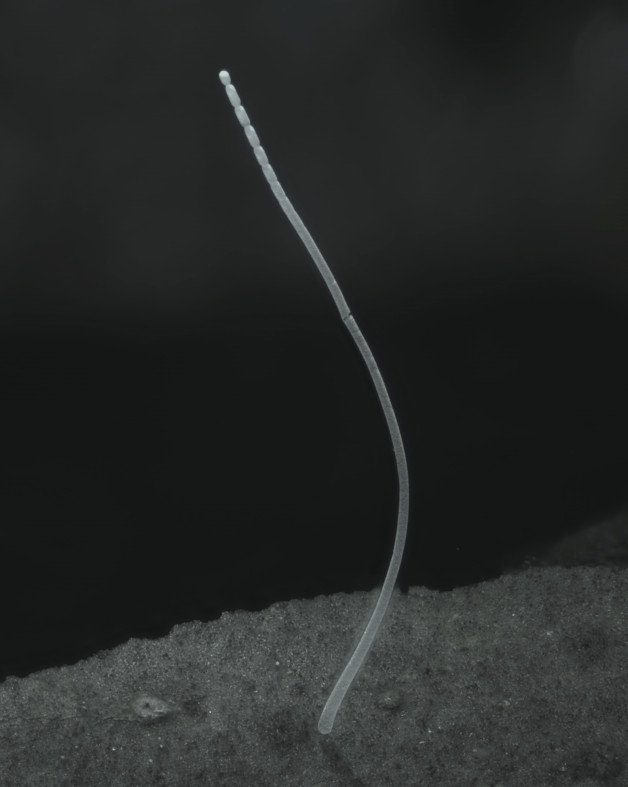
An article published in the journal “Science” reports the identification of a bacterium that can reach two centimeters in length, a size that is several thousand times larger than those of most bacteria. A team of researchers named it Thiomargarita magnifica after discovering it in the Guadeloupe archipelago in the Lesser Antilles. It took years to understand its nature because the size, gigantic for a bacterium, and some unusual characteristics for this type of organism initially suggested that it was a multicellular organism, perhaps a fungus.
We are used to thinking of bacteria as microorganisms a few millionths of a millimeter long. In fact, there are known species of bacteria considered giants in the Thiotrichaceae family that can approach one millimeter in length such as the Thiomargarita namibiensis species. Now another species assigned to the same taxonomic genus turned out to be gigantic even by those standards.
The story of this discovery begins in 2009, when Olivier Gros, professor of marine biology at the Université des Antilles in Guadeloupe in Pointe-à-Pitre, conducted a search for organisms with a metabolism that included the oxidation of sulfur among sulfur-rich sediments of the red mangroves growing in Guadeloupe. Among his discoveries is the organism that initially looked like a eukaryote, perhaps a fungus, due to its size that makes it visible to the naked eye.
Only thanks to tests conducted over time, Olivier Gros and other researchers realized that the strange organism discovered is unicellular and has a much simpler cellular structure than eukaryotes. It’s a prokaryote, although this definition has become controversial because it includes very diverse organisms such as bacteria and archaea.
Thiomargarita magnifica is a sulfur-oxidizing, which means that the oxidation of sulfur is part of its metabolism. It’s certainly not the only bacterium of this type while other characteristics seem like they were never seen before. Its size is due to a sac full of water and nitrates that occupies a large part of its volume. Normally, bacteria cannot grow very much because otherwise the spread of nutrients and waste quickly becomes a problem. In this species, the sac pushes the cell contents towards the cell walls, helping their diffusion and allowing it to reach a size much larger than any known bacterium.
The tests of Thiomargarita magnifica also looked at its DNA, which was examined. Generally, chromosomes in bacteria can move freely within them because they lack cell membranes, which are typical of eukaryotes. Instead, this giant bacterium has membranes that wrap around its DNA, a characteristic that goes against the typical definition of prokaryotes.
DNA analysis of Thiomargarita magnifica also showed extreme polyploidism, which means that there are multiple copies of its genome. This is another anomaly and among other things makes this bacterium’s DNA much larger than average.
Several characteristics of Thiomargarita magnifica are out of the ordinary, and further studies may help to better understand how they evolved and the details of its biological mechanisms. Such a complex bacterium may also offer more general clues as to how complexity emerged in the history of life on Earth to explain at least some shifts from simpler to more complex life forms, especially eukaryotes.

